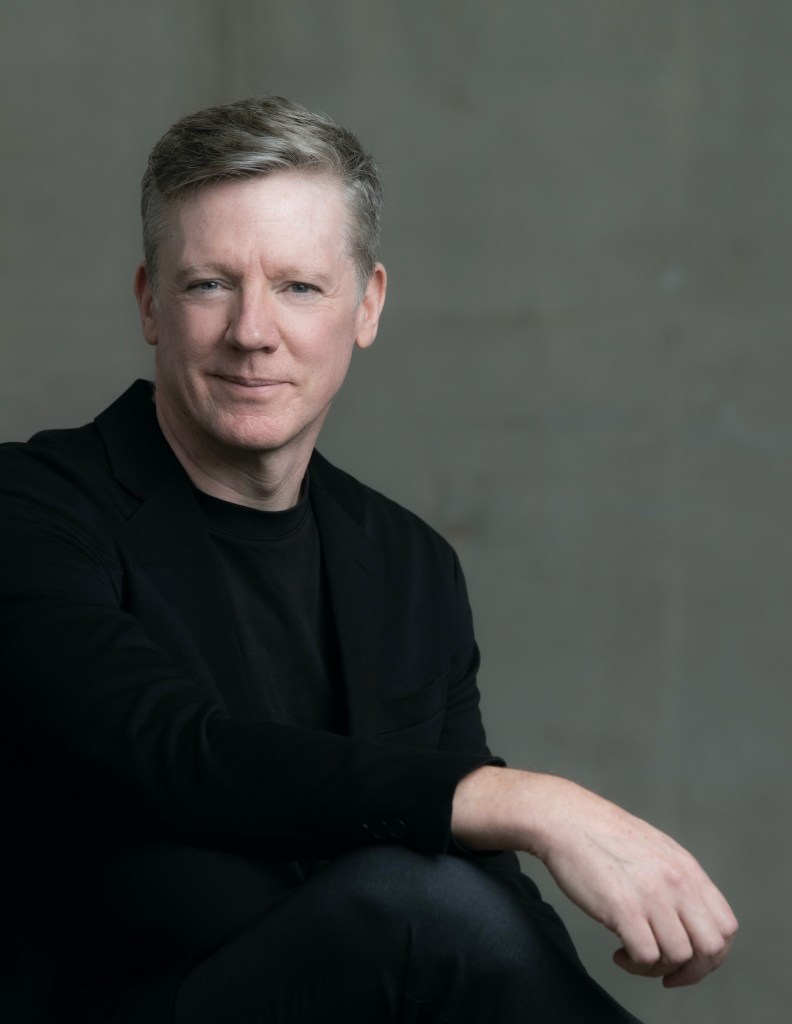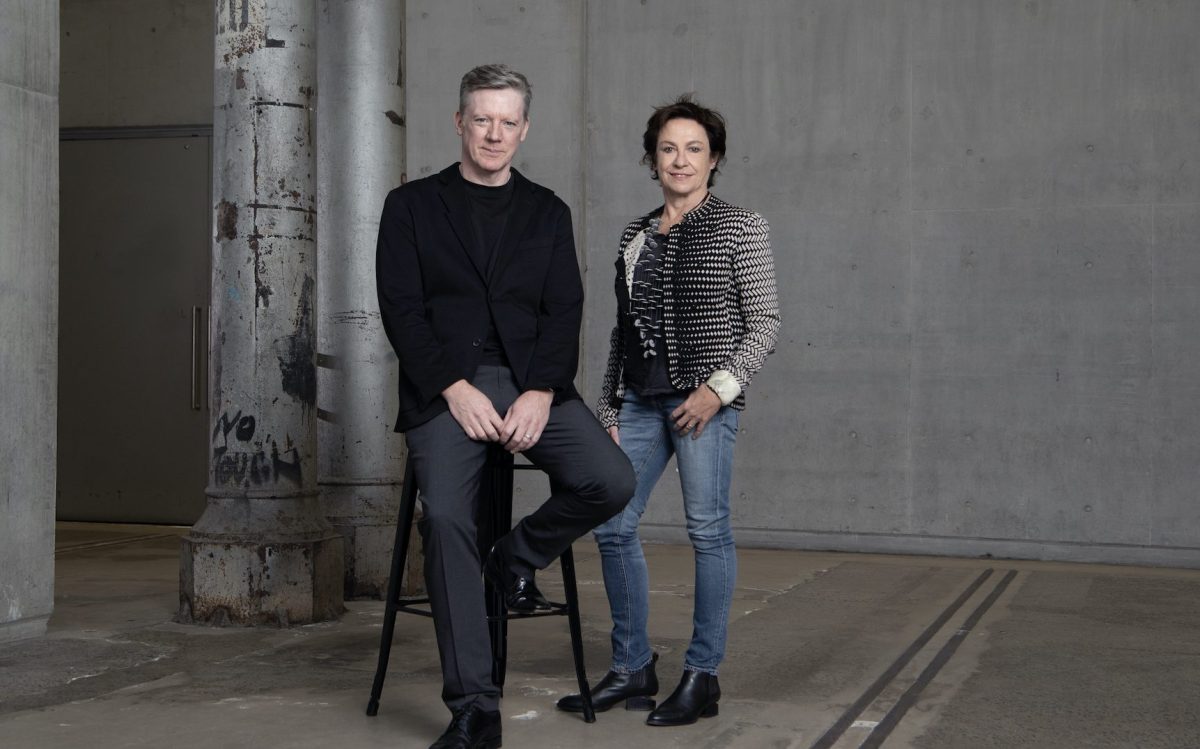Carriageworks – the premiere arts venue in Sydney – recently announced it had appointed the respected international arts administrator, Fergus Linehan, as its next Chief Executive Officer. It is not an easy gig to take on – a multi-arts venue, in a heritage building that spans government funding and commercial enterprise, all while sitting on First Nations real estate.
If anyone can manage it, the Irish-born Linehan is well-placed to do so, formerly leading the acclaimed Edinburgh International Festival (2015-2022), the Dublin Theatre Festival as both a producer and director, and and before that Sydney Festival (2006-2009), Vivid Live at the Sydney Opera House (2012-2014).
Carriageworks chair, Cass O’Connor, says of the timing of Linehan’s appointment: ‘Carriageworks has both history and potential at a time our arts and cultural sectors spark back to life. Importantly, new state and federal governments have similar ambitions to strengthen Australia’s creative industries.’
In his final year at Edinburgh, Linehan presented a special season of Australian work, with contributions by William Barton, Gravity and Other Myths, and Belvoir’s Counting and Cracking by S Shakthidharan. He is widely respected in the arts community for his expertise in programming and curating impactful cultural events, and he has been recognised with numerous awards and honours. He even has a history with Carriageworks, staging its inaugural performance, Zero Degrees by Akram Khan and Sidi Larbi Cherkaoui in January 2007.
ArtsHub catches up with Linehan, a week in on the job.
ArtsHub: You’ve had this incredibly rich history within the festival environment. How does that prepare you for running a multi-arts venue like Carriageworks?
Fergus Linehan: For a long time, I’ve had to jump across different genres and into different kinds of communities of interest. I think that’s what’s interesting when you’ve got to work multi-genre, which is quite different to if you’ve just worked in theatre or classical music or something like that.
The other thing would be the fact that Carriageworks is often a place where special things happen. And in festivals, it’s not what you might find within the normal run of the season, but slightly steps outside of that. So there are parallels there as well.
But in terms of running a venue all year round, it’s new to me!
What’s your greatest asset from that past history, apart from the ability to cope with anything festivals may throw at you?
I have had the great privilege of travelling and seeing a lot. Running a venue is very different to running a festival, because it doesn’t all come from you. When you’re running a venue, you’re more supporting other people. For someone like me – who has an awful lot of experience – it’s about supporting a plurality of views. I see it as quite different to what I’ve done before.
I see this role as less about personal authorship around the whole and more about supporting communities of interest to come up with that program. I feel that’s the way the arts are heading anyway.
With COVID we threw around words like ‘nimble’, ‘flexible’ and ‘resilient’. Those words suffer from overuse, but at the same time they’ve created a pathway for us to redefine what our institutions can be. Do you feel Carriageworks is on the precipice of great opportunity for change?
I think it is. We’re no longer in crisis in the way we were before, but we are still below the surface. People are saying, “Look, you’ve got 2500 people in and everyone’s having a great time, and you sold all those tickets, and the artists showed up,” so it’s back. But, actually, there’s tremendous fragility still out there.
One of the things I worry about a little bit, is people just imagining that it has snapped back into 2019. We’re in a process of rebuilding resilience into the arts at the moment, so there’s incredible opportunity, but I’m also conscious that there’s work that needs to be done. There’s certainly a kind of a recalibration needed. And that’s where my focus is at the moment. I’m just trying to put this together for the next 12 months.
Adding to the Carriageworks brand
Redfern has changed a lot, since you presented the theatre piece Zero Degrees back in 2017.
It also makes you realise how much people’s perception of Redfern has changed. There was basically a whole tract of the audience that were going, “I’m not walking down Wilson Street at 11 o’clock at night!” People have had such amazing experiences here over the years and I think, if anything, people want more from us.
The Greater Everleigh area has the last great piece of public architecture of this kind within the city centre, and it’s a cultural frontier. One of the reasons is because we jump between so many different areas of interest. Finding the focal point for that will be one of the big jobs, and to really articulate what it is Carriageworks can bring to the cultural landscape that no one else can, and do it on a consistent basis.
Today, Carriageworks is very much a brand. How do you work with that?
It is. I’ve been thinking a lot about that and that we’re not that far off the 20th anniversary in 2027. The architecture makes demands of us, and there have been different chapters. But it’s no longer an urban redevelopment or regeneration project. That ball is up and running. And in 20 years from now, this area is going to be unrecognisable. So I think there’s enormous responsibility around having this amount of public space, and how it’s going to serve that community. I think that’s going to be critical.
The venue is at its best when it starts to really hum, when you get up to about 2000 people and you have epic artworks or massive performances. And so the challenge is to create intimacy in a space like this. How do you do that?
Thoughts on the future funding mix for Carriageworks

You recently wrote a piece for ArtsHub about the culture of philanthropy. Is that a priority stepping into this role at Carriageworks – to deepen that philanthropic pool?
I am always very interested in the health of having a good mix between a donor base and government, ticket sales and venue hire, because these things ebb and flow a little bit as well. They create a good kind of counterbalance to each other.
When you’re in Europe people go, “Oh my gosh, 80% of their fund money comes from government.” But sometimes that’s problematic as well. I think that mixed economy means that no one source has an overbearing influence.
At the beginning of COVID, Carriageworks closed in a financial crisis, followed by staff shuffles, government lease negotiations and so on. Is the current model strong, and how will you create stability?
Carriageworks, in a way, ended up getting punished for being quite entrepreneurial, because it was generating revenues from renting the spaces for commercial needs, and then using that revenue for its projects. And so it was exposed, because that obviously all disappeared overnight.
So it wasn’t that the business model was really troubled; it was just because of the particular way it was made up. It was a kind of perfect storm, so it got hit much harder than others. It didn’t have massive deficits on the balance sheet or anything like that. It was just particularly vulnerable to the odd kind of way that COVID came at everyone.
Read: Carriageworks secures independent future
In Edinburgh we were fine, because we had a donor base that went back decades, and the government snapped in really quickly with substantial support. We didn’t have a building, we were a festival, we just had our staff. And so we just stopped doing what we did. It was a very different scenario to Carriageworks.
First Nations alongside internationalism
That First Nations lens has been a particularly important one for Carriageworks more recently. How do you love local, but also extend audiences to think globally?
To look at the provenance of Redfern’s roots in First Nations and the political activism of 1970s as the Blak capital of Australia – that’s where so much of the discussion we’re having today stems from, and how it speaks to looking forward.
But I can’t speak to First Nations with any degree of authority. I think the intimacy, and the kind of capacity to just be a meeting place and working place, is really important and needs to be balanced against the engineering of big pieces, in terms of international work.
I do think, though, some of the international work will always be a counterpoint – and, indeed, the conversation between Australian First Nations and First Nations from other parts of the world. But obviously [in my recent roles] I’ve been in the middle of a conversation about internationalism, which is a much bigger conversation. This was the foundation point for most of the big arts festivals in the world. Whether it’s Adelaide or Edinburgh, that idea of internationalism has slightly gone out of vogue, because it was seen as being part of a neoliberal conversation.
Now I think it’s coming back again, but not necessarily in the same form. I think there are big sustainability questions around it that we’ve got to address first.
And your thoughts on growth?
The thing I’d say, coming back to Sydney, is it’s a better city than it was 15 years ago. It’s an incredibly exciting place at the moment. And people don’t realise the elasticity of almost five million people. By 2050, it’ll probably have the same population as London. And I just think the dynamics that are going to come with that will obviously be really challenging, and it’s going to create all kinds of things people are going have to overcome.
The political rhetoric has now shifted towards a degree of enthusiasm and optimism. It’s an incredible time to be here, and it feels like it’s the beginning of something. I don’t know what that is. But it’s an amazing place to be at the moment. I think we’re starting to see a lot of the hard work that’s been done over the last two decades, and we’re physically seeing it in the city now, which is really cool.





